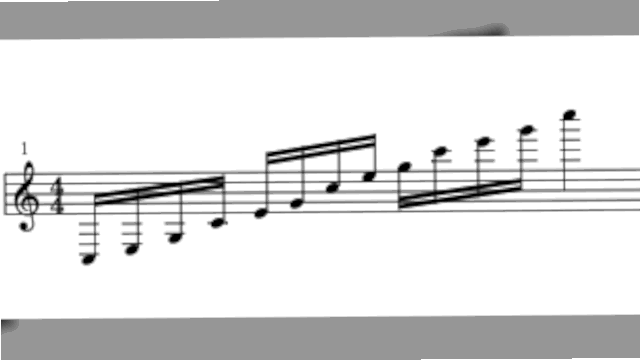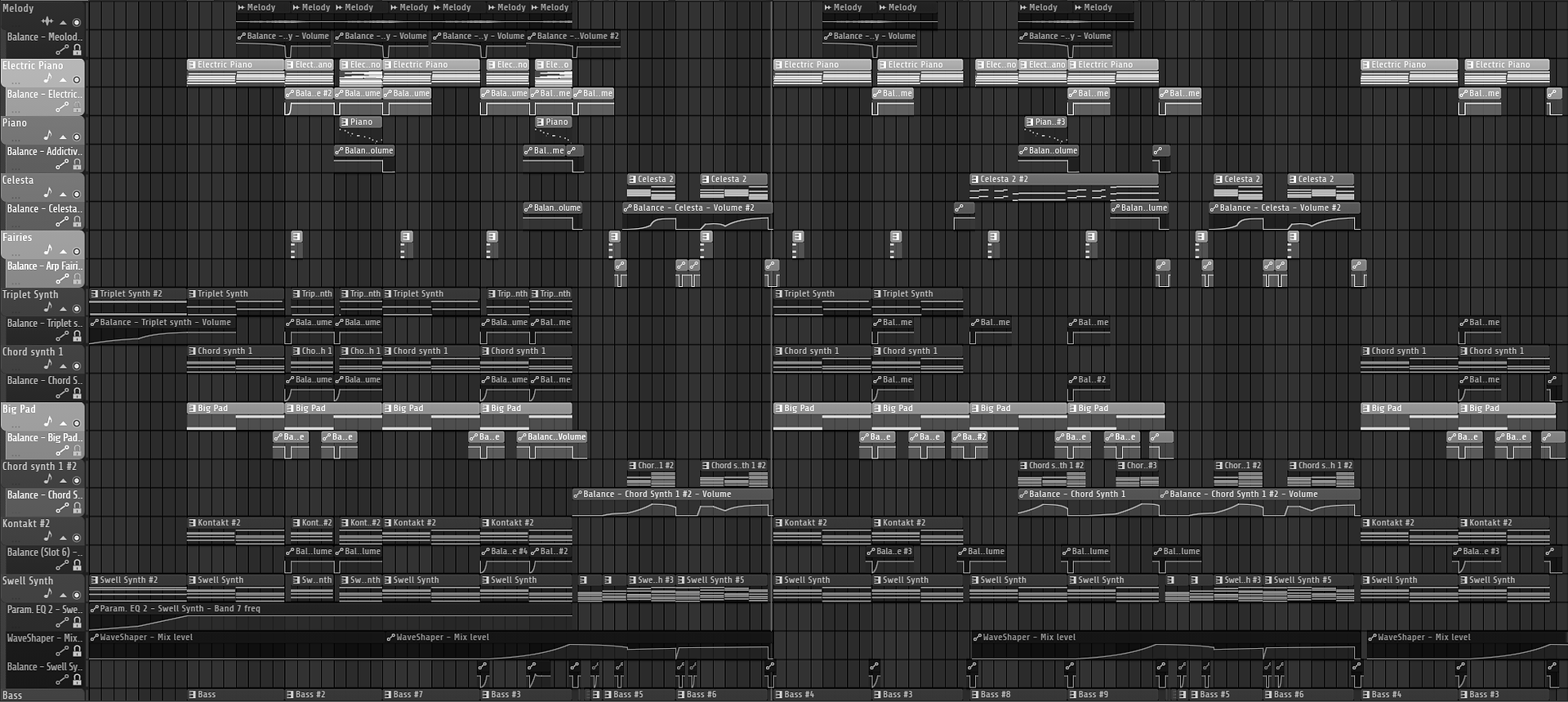Have you ever heard the word "arp" or "arpeggio" and thought, "what is that?" Then you are in the perfect spot!
Arpeggios (arps) are some of the most iconic and recognizable features of any piece of music. Being found in almost every type of music genre, one does not need to look far to notice examples of arps being used in Classical, Jazz, Rock, Hip-Hop, Lo-fi, and EDM.

Yet, because every style of music uses arps in different ways (e.g. Chiptune arps are often artificially generated and extremely fast), there are multiple means to produce and utilize arps in music.
So how can we as producers hope to take advantage of arps in our own music? Well, in any way we see fit! This post means to shed light on arpeggios while exploring different methods of producing and experimenting with them in our own projects.
Music Theory Behind Arpeggios
What exactly is an Arpeggio?
Defined by the "Schirmer Pronouncing Pocket Manual of Musical Terms," an Arpeggio means "playing the tones of a chord in rapid, even succession; a broken or spread chord, or chord passage." The key word to understanding this definition is passage–which is defined in the same pocket manual as "a rapid repeating figure, either ascending or descending." Again, if we go down the rabbit hole, the pocket manual defines a figure as "a group of notes in a melody." So in other words, an arpeggio is a group of notes in a chordal melody that is repeated rapidly and evenly in ascending or descending order. Phew...that was a mouth full. As great as that description is, I believe the best way to understand an arpeggio is by hearing it.
Broken Chords
Ascending C Maj:
Descending C Maj:
Repeated Chordal Melody
Ascending C5 6:
Descending C5 6:
Although, I would add, arpeggios do not need to be quick or "rapid," so long as there are chordal tones being played evenly in ascending or descending order.
After letting that sink in, it is safe to assume that this idea can be applied to any chord or chordal melody one can think of.
Live Arps V.S. Artificially Generated Arps
Live Arps Explained
Classical
When speaking of Classical music, I am referring to the generalized idea of western music (1650-1900) and not the historical Classical period (1750-1820). In Classical music, arps are extremely important. This is demonstrated by the massive amount of Classical music that is saturated with the technique (see: J. S. Bach - "Prelude in C major", Frédéric Chopin - "Fantasie Impromptu", Claude Debussy - "Clair De Lune"). Because of their wide ranging applications, composers also molded arps to assume the function of multiple roles within a piece. Although they were used mostly for embellishment and accompaniment, Classical composers often took advantage of the arpeggio's interchangeable qualities by supplying them as their central melody. This is why as a classical musician (or any musician), Arpeggios are one of the first things you learn along with scales and chords.
Jazz
Jazz is also a genre of music that relies heavily on arps–although, they tend to be employed more ornamentally than being used as the main body of the piece. Since the time of its invention, Jazz musicians and composers have clearly expressed their love for arpeggios. From improvised solos to beautifully decorated introductions, the arpeggio is an essential phrase needed to create Jazz (see: Bobby Hamilton Quintet Unlimited - "Dream Queen", Dave Brubeck - "Take Five", Terry Gibbs Quartet - "Do You Mind?").
Lo-fi
Lo-fi, as we know it today, is relatively new to the scene and is quickly garnering large amounts of dilettante interest and artistic advancement. While Lo-fi owes its roots to the first home and indie producers from 1960-1990's, its modern form is a hybrid of multiple genres of music. The theme that unites Lo-fi, though, is the nostalgia for vintage gear. How this relates to arpeggios is in Lo-fi producers' use of sampled recordings made from vintage gear. Whether these recordings are sampled from an album or are originally created, having sampled live music in a Lo-fi mix is absolutely necessary to create the contemporary sound. As a result, arps are some of the most important types of phrases used to get the genre's aesthetic right. And just like classical composers, producers who create Lo-fi often use arps as embellishment and/or as the main melody. (see: ibrahim's "lovely whisper (w/ Waifu Avenue)")
How to Make Live Arps
In spite of their diverging styles, Classical, Jazz and Lo-fi almost exclusively rely on live recordings of musicians who physically play arps for a given piece. For many musicians, this is a fairly simple task. But for producers who aren’t the best musicians (especially if you're not a piano player), this can be really difficult to do.
If you want to get the natural sound of a live arpeggio, check out these two videos I made. They will help make the process fun and easy while making a convincing sound! These examples were made in FL Studio, but the concept will be the same with any piano roll your DAW comes with.
Artificially Generated Arps Explained
Electronic Music and Arpeggiators
In Electronic music, arps are a fundamental sound used to create melodies, ambience or dial up the intensity of a track. Each genre of Electronic music uses arps differently, but a great number are generated in the same way–with an Arpeggiator. In Alex Lavoie's article "Arpeggiators Explained: 7 Creative Ways to Use Arps in Your Tracks", Alex describes an arpeggiator "as a synthesis tool that uses MIDI or control voltages to cycle through a series of notes according to a clock rate and note division."
This basically means that an arpeggiator is a tool that plays an arpeggio for you. This can be done with a midi controller or with an analogue arpeggiator, but the goal is the same–playing an arpeggio of your choosing at the speed you wish.
There are plenty Electronic music artists who physically play the arps in their music, so using an arpeggiator is by no means a rule you must follow. The reason why many Electronic music producers prefer to use an arpeggiator has to do with the nature of the genre. Electronic music, in many ways, is perfect music. By that, I mean it is made with perfect timing, perfect pitch (unless you de-tune the synths on purpose) and so on. There are many examples to prove this concept wrong, but the greater majority of Electronic music is made to be very clean and near perfect. (see: HOME - "Resonance", Stranger Things Soundtrack - "Stranger Things")
Another reason why arpeggiators are used so often in Electronic music is due to their extreme speeds.
Chiptune
Chiptune is a great example of a genre that relies heavily on arps and arpeggiators. Furthermore, the arps used in Chiptune are frequently impossibly fast. Like, too fast to physically play fast. By experimenting with this, producers of Chiptune–and genres of the sort–have taken arps to a whole new feel. When played at these speeds, the luscious arpeggio found in Classical and Jazz is all but transplanted by an electrified glitching wall of sound. This is, however, perfect for Chiptune! (see: Fearofdark's "Lovesickness [NSF, 2a03]" and "Star Dance", Disasterpeace's "Constellations")
How to make Artificially Generated Arps
Luckily, creating an arpeggio is very easy to do. The 2 most common ways to create an arpeggio without performing it is in your piano roll and/or with an arpeggiator. While having a physical analogue arpeggiator would be the most swag, they are not needed and most DAWs have a stock arpeggiator. In the videos below, I go over a brief summary of how I create arpeggios using the piano roll and an arpeggiator. I will be demonstrating these techniques in FL Studio, but the ideas can be applied to any DAW.
Arpeggio in FL Studio's Piano Roll
FL Studio Arpeggiator
In Conclusion
Arpeggios are a powerful concept to employ within your music. Arpeggios can add so much emotional context, they are super versatile and they can even help with writer's block. If you aren't already making the most out of this technique, I highly encourage you to explore it more. If you have any questions, feel free to drop a comment and I'll get back to you as quickly as I can!

Comments